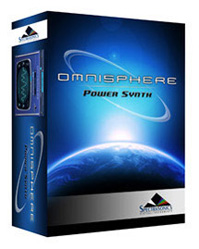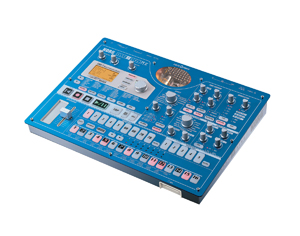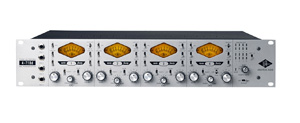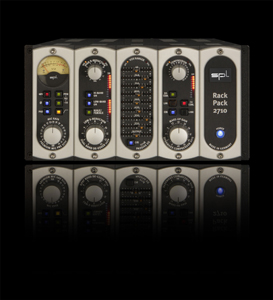Musikmesse 2010 New Tech Roundup
Musikmesse 2010 — “the international fair for musical instruments, sheet music, music production and music business connections” — took place last week in Frankfurt, Germany. The show provides a global stage for MI and pro audio manufacturers, many of which had new products on display. We’ve collected some highlights here for you:
Korg Intros New Electribes, monotron Hand-Held Analog Synth and More
Updating its line of Electribe pattern-based music production stations, Korg has announced the new tube-driven Electribe-MX SD (EMX-1 SD) and Electribe-SX SD (ESX-1 SD), revitalized with new patterns and “massive” SD data storage (and available 06/10; MSRP: $750).
Korg teamed up artists from around the world — including Ninja Tune/Big Dada artists Emika and the Anti-pop Consortium — to deliver fresh beats, patterns and Electribe SX (ESX-1) samples. The addition of SD/SDHC card storage allows up to 32 GB of sound, pattern, song and sample data to be saved on an individual card.
The EMX-1 SD uses Korg’s MMT (Multiple Modeling Technology) sound engine to offer sixteen types of tone generation. The ESX-1 SD offers editing features to provide the freedom to sample and modify sounds in realtime.
Korg also unveiled its new AAA battery-powered, hand-held monotron analog ribbon synthesizer (available 08/10; MSRP: $85) said to generate thick and powerful sounds, plus a true analog filter with audio input.
The unique ribbon controller keyboard borrows from performance aspects of Korg’s KAOSS products. Simple finger motions can produce expressive effects such as vibrato and glide. When used in a band, the monotron can harmonize with another instrument – or take center stage for a monotron solo.
Check out this video demo of the monotron in action, via Moogulator:
The monotron uses the same VCF circuit as Korg’s classic MS-10 and MS-20 semi modular synthesizers. Just as on the original MS-20, the monotron’s filter can be “patched into,” allowing any external audio source to be processed by the monotron’s filter. So, users can connect a KAOSSILATOR, guitar or digital audio player to the monotron and enjoy tone-bending filter effects.
And Korg’s new microSTATION (available 07/10; MSRP: $850) features Korg’s 61-key Natural Touch mini keyboard, numerous effects, dual arpeggiators, an on-board sequencer and 16 tracks of MIDI recording power.
The microSTATION features the new EDS-i (Enhanced Definition Synthesis – integrated) engine, derived from the EDS system found on Korg’s M3 XPanded and M50 professional instruments. The effect section adds up to five Insert effects (including Korg’s proprietary “REMS” amp modeling technology) two Master effects and one Total effect.
For detailed editing of Programs, Combinations, Drum kits and Arpeggio patterns, the microSTATION is bundled with the “microSTATION Editor” and “microSTATION Plug-In Editor” software.
Also new from Korg are the PS60 Performance Synthesizer and MR-2 high-res mobile recorder.
Roland Intros New GAIA SH-01
Roland unveiled several new products, including the new GAIA SH-01 synthesizer, Lucina AX-09 (keytar!) and V-Accordions.
The GAIA SH-01 features three complete virtual analog synths, 64-note polyphony, three oscillators per voice, big selection of FX (and up to 5 simultaneous), full USB DAW capability and more, for an expected street price of $650. Check out the demo vid:
Spectrasonics Announces New Features and Sounds for Omnisphere & Trilian
Spectrasonics announced version 1.3 updates (available April 20; free downloads for registered users) with new features and sounds for their Omnisphere and Trilian virtual instruments, including real-time performance sync capabilities, which allow all three of Spectrasonics virtual instruments (Omnisphere, Trilian and Stylus RMX) to be used together in unique ways.
 The new ‘Latch’ and ‘Trigger’ modes are ideal for Electronic Music performers since they allow real-time creation of complex, multi-layered performances with full synchronization between multiple Omnisphere, Trilian and Stylus RMX parts without the need for traditional sequencing techniques.
The new ‘Latch’ and ‘Trigger’ modes are ideal for Electronic Music performers since they allow real-time creation of complex, multi-layered performances with full synchronization between multiple Omnisphere, Trilian and Stylus RMX parts without the need for traditional sequencing techniques.
New performance and live remixing techniques are now possible, since any incoming MIDI data to these instruments can now be quantized in real-time — making it easy to experiment, jam and improvise with any other clocked sources without losing any synchronization.
Spectrasonics has also taken its Groove Lock technology further in v1.3 and applied it to the multi-stage envelopes in the STEAM engine. This advancement allows all of the envelopes in Omnisphere and Trilian to be ‘Groove Locked’ from external sources and will automatically create rhythmic envelope patterns by dragging standard MIDI files from Stylus RMX and dropping them on the Envelope displays, reducing the time it takes to create rhythmic envelopes.
Also included in v1.3, the Spectrasonics’ sound design team have created a ‘VIP’ Omnisphere Library for users who own both Omnisphere and Trilian. The ‘VIP’ library utilizes the core libraries of both instruments together with Omnisphere’s advanced synthesis to create new sounds. Specifically for Trilian users, the sound design team has created new “produced” multis for the electric and acoustic basses in the 1.3 update which are designed for instantly cutting through heavier rock and pop mixes.
Omnisphere has a retail price of $499, Trilian has a retail price of $299, and Stylus RMX Xpanded has a retail price of $399.
PreSonus Studio One 1.5 Update Adds Big Features
PreSonus announced version 1.5 (available 04/10) of its Studio One DAW software. Key additions include support for video playback and sync for composing to picture, major enhancements to the Browser’s drag-and-drop capabilities, the ability to draw your own automation waveforms, automation points that are locked to events, a new key-command editor, changing tempos within a event without slicing the event into separate events, and support for song and album art.
A built-in SoundCloud client enables you to upload audio files from Studio One directly to the Web. The MIDI features have been improved, including a new MIDI file player in the Browser. PreSonus has enhanced the Native Effects plug-ins and added new ones. And there’s more! Check out URL for a detailed rundown of all the new features added in this update.
Universal Audio Intros “TWIN-FINITY” Four-Channel Mic Pre/DI
Universal Audio announced its latest hardware product — the 4-710D Four-Channel “Twin-finity” Mic Preamp & DI with Dynamics (available Q3 2010; Pricing TBD). The new analog hardware boasts four channels of tone-blending mic pre’s plus true-bypass 1176-style compression and 24-Bit, 192kHz A/D conversion.
Based on the original 710 Twin-Finity preamp — favored by engineers including Al Schmitt (Jackson Browne, Dr. John, Diana Krall) and Matt Boudreau (The Samples, Sean O’Brien) — each of the four mic preamp channels allows for continuously variable tone between 100% tube and 100% solid-state.
Other notable 4-710D features include:
– Newly designed 1176-style compression/soft-limiting circuit per mic channel
– Eight channels of high-quality 24-Bit, 192kHz A/D conversion
– Digital output via dual ADAT optical or AES/EBU DB-25
– Monolithic balanced output stage
– Balanced send/return inserts
Sound Performance Lab (SPL) Rolls Out M/S Master, Transpressor, RackPack, More
On the hardware side, SPL unveiled its new M/S Master, Transpressor, RackPack 4, and RackPack Dual-Band De-Esser. The M/S Master allows for fully adjustable separation of left/right signals to middle/side signals, as well as a frequency filter, stereo width control, and inserts for external processors that allow for instant switching from L/R to M/S processing.
The Transpressor consists of both the Transient Designer and Twin Core Compressor modules, which can be used in any order. The company notes that the Transient Designer’s processing begins at the limits of compression in order to maintain the dynamics of a track or mix.
The RackPack 4 is a mounting frame and power supply for up to four modules, featuring a compact design with a lateral handle, and additional fitting system for a 19-inch rack. The Dual-Band De-Esser, RackPack’s new module, takes sibilance out of vocals with targeted processing, “Auto-Threshold” for keeping a consistent signal level in spite of varying microphone distances, and settings tailored to male and female voices.
On the software end, SPL showcased their new DrumXchanger, a plug-in said to accurately record and replace drum sounds. Included with the software are two complete Transient Designer processing stages, and a 24-bit/96 kHz SPL sample library.
Another new and exciting synth, Radikal Technologies introduced its Accelerator.
The Accelerator (available 06/10) is a polyphonic Synthesizer with eight subtractive voices, each consisting of three oscillators, two multimode filters, 6 envelope generators, three voice LFOs and one section LFO. An additional noise source with independent multimode filtering and variable signal routing has been added for more sonic flexibility.
Hear some sounds on this video demo, via Moogulator, from the show floor:
Features include:
– 3 oscillators with sweepable waveforms, time linearity modulation, phasemodulation, ringmodulation between Oszillator 2+3
– oscillator synchronisation 6 envelope generators
– 4 LFOs (3 voice, 1p art LFO)
– noise with noise filter (multimode filter 12 / 24 dB)
– independent amp EG for noise
– 2 multimodefilter per voice LP, HP, BP and
– Notch with 12/24 dB per filter switchable
– independent oscillator to filter feeds
– serial and parallel filter configurations
– arpeggiator
– step sequencer
– MIDI In, Out, Thru
– MORE!
Also, came across the awesome looking/sounding OP-1 from Sweden’s Teenage Engineering. The OP-1 is a synth/sampler/sequencer that was first introduced at last year’s Musikmesse, with a new built-in Tape feature talked up at Winter NAMM. It’s still not out yet but check out this demo and join the relative masses in waiting:
Please note: When you buy products through links on this page, we may earn an affiliate commission.









